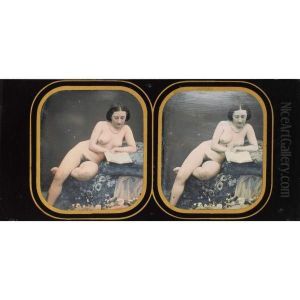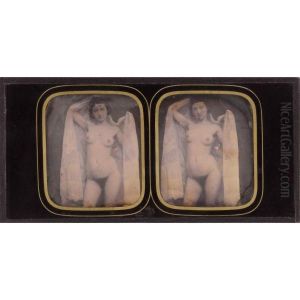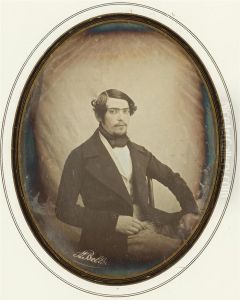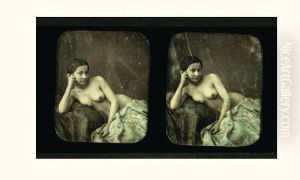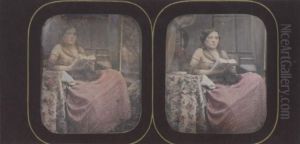Auguste Belloc Paintings
Jean-Baptiste Auguste Belloc was a French photographer and illustrator primarily known for his daguerreotypes and contributions to the early development of photography. Born on July 23, 1800, in Paris, France, Belloc grew up during a time of significant artistic and technological changes, which included the birth of photography in the late 1830s.
Auguste Belloc started his career as a painter and lithographer but soon became fascinated with the emerging medium of photography. He learned the daguerreotype process, which was the first commercially successful photographic process, invented by Louis Daguerre. This technique created unique, highly detailed images on a silvered copper plate. Belloc became known for his portraits and nude studies, the latter being quite controversial at the time. His work in this domain was among the earliest instances of fine art photography and contributed to the dialogue on photography as an art form rather than just a means of documentation.
Belloc was active during a period when Paris was a hub for photographic innovation and artistic exploration. He engaged with other artists and intellectuals, contributing to the vibrant cultural scene of mid-19th century France. Aside from his work as a photographer, he also wrote articles and essays on the subject, helping to shape the discourse around photography's role and potential.
Despite his involvement with the medium during its nascent years, Auguste Belloc did not achieve the same level of fame as some of his contemporaries like Nadar or Gustave Le Gray. Nevertheless, his work provides valuable insight into the early techniques and aesthetic considerations of photography. Auguste Belloc died on October 2, 1867, leaving behind a body of work that continues to be of interest to historians and collectors of early photography.
